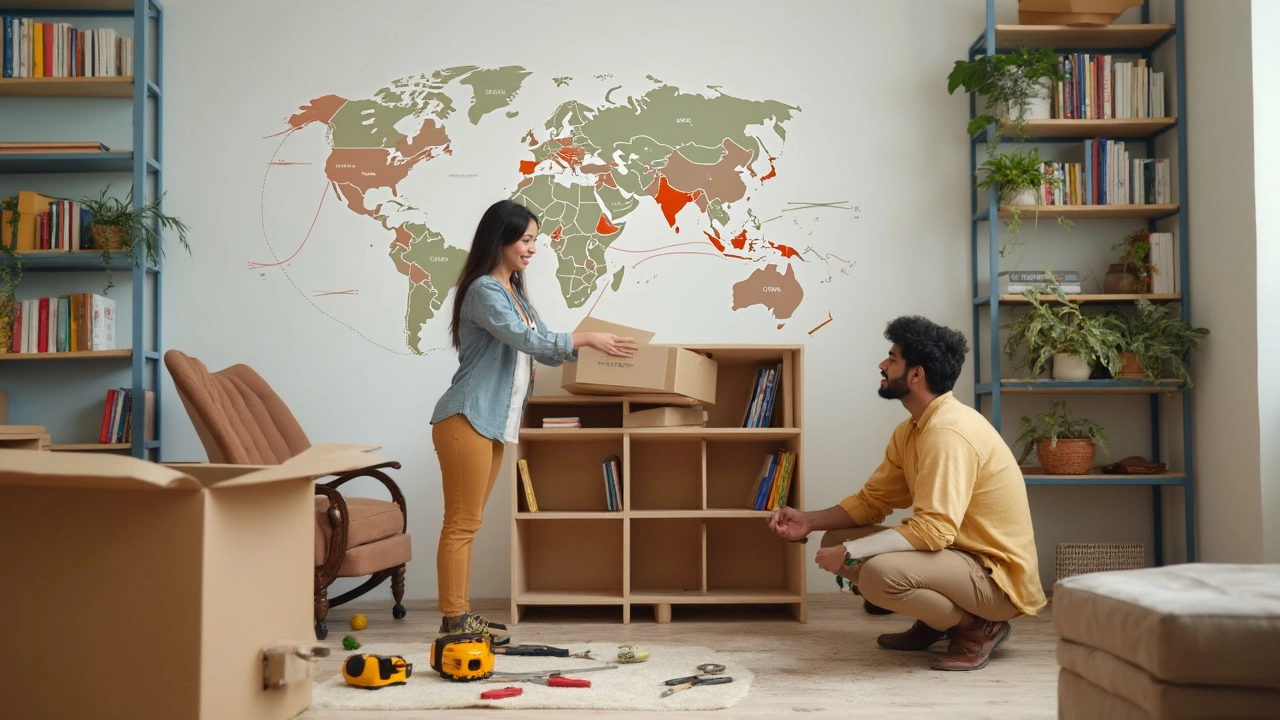Supply Chain Secrets for Furniture: From Factory to Living Room
Ever wonder how that sleek sofa makes its way from a workshop in another state to your front door? The answer lies in a supply chain that’s part factory floor, part truck route, and part storage closet. Understanding the steps helps you avoid surprises, save money, and keep your new couch looking great.
How Furniture Moves: Production to Delivery
First, a maker sources raw materials – wood, metal frames, foam, and fabric. Good manufacturers pick quality suppliers, because cheap wood can lead to sagging sofas later on (see our guide on sofas that don’t sag). Once the pieces are cut and stitched, the finished unit is packed in a pallet or a flat‑pack box. This packaging protects the couch during the long haul.
Next comes transportation. Most furniture travels by truck, but some high‑end items use rail or sea freight to cut costs. The carrier needs to know the exact dimensions, weight, and any special handling instructions. A common mistake is under‑estimating the height of a corner couch, which can cause damage when loading onto a low‑deck truck.
When the truck reaches a regional hub, the couch may be stored briefly before the final delivery. Here, proper storage is crucial. Keep the sofa off the ground, use a breathable cover, and avoid damp spaces that can cause mold – see our post on preventing mold in storage for the details.
Storage, Delivery, and Your Home
Before the delivery crew arrives, measure your doorway, stairwell, and any tight corners. Our checklist for moving a couch around a corner can save you from a disastrous day of trying to squeeze a large sectional through a narrow hallway.
Once inside, give the sofa a moment to settle. Some manufacturers recommend letting the cushions air out for a few hours, which helps the foam regain its shape. If you plan to keep the couch for years, protect the fabric with a cover (learn why people cover their couches in our dedicated guide) and avoid placing it directly on concrete floors.
Finally, think about the after‑sale supply chain. Good brands offer replacement parts for legs, cushions, and even frames. Knowing where to get a spare leg can extend the life of a coffee table and keep the whole set looking cohesive.
In short, a transparent supply chain means you know where each piece comes from, how it’s protected during travel, and what steps you need to take once it arrives. Paying attention to these details lets you enjoy your new furniture without hidden costs or nasty surprises.
So next time you shop for a sofa, ask the retailer about their sourcing, packaging, and delivery process. A few extra questions now can save you time, money, and headaches later.
Where is Most IKEA Furniture Made? Real Origins Behind Those Bookcases
Ever wonder where your trusty IKEA bookcase actually comes from? This article digs into the real origin of IKEA bookcases and why you almost never see 'Made in Sweden' on the label. Get the details on which countries make the most IKEA furniture, find out why the locations matter, and snag tips for choosing longer-lasting IKEA shelves. Perfect for anyone curious about what's behind the flat pack.





